Call of Duty 2:
Publisher: ActivisionWe used the full version of Call of Duty 2, patched to version 1.2. The game makes use of some awesome effects and is generally very graphically intense and immersive. That's helped by the tremendous smoke effect that Infinity Ward have created -- it's better than anything we've ever seen before. There are also real time shadows and subtle HDR lighting effects too.
The gameplay is not as linear as the first version of Call of Duty, and Infinity Ward has ditched the rather old Quake 3 engine in favour of creating its own proprietary graphics engine to render the effects. There is something about the game that makes it very intense and you often find yourself having to take a break from the action because you're too overwhelmed by its immersiveness and intensity.
We used a custom timedemo that covers both indoor and outdoor performance in the title across one of the most intensive portions of the game. The Optimise for SLI option was disabled for single GPU configurations as it causes some texture corruption if there is only one GPU present. It was enabled for dual-GPU configurations and all other options were set to their maximum values.
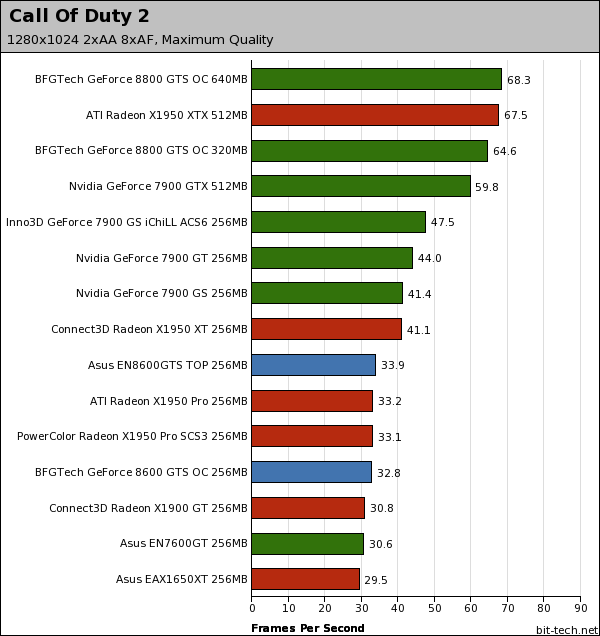
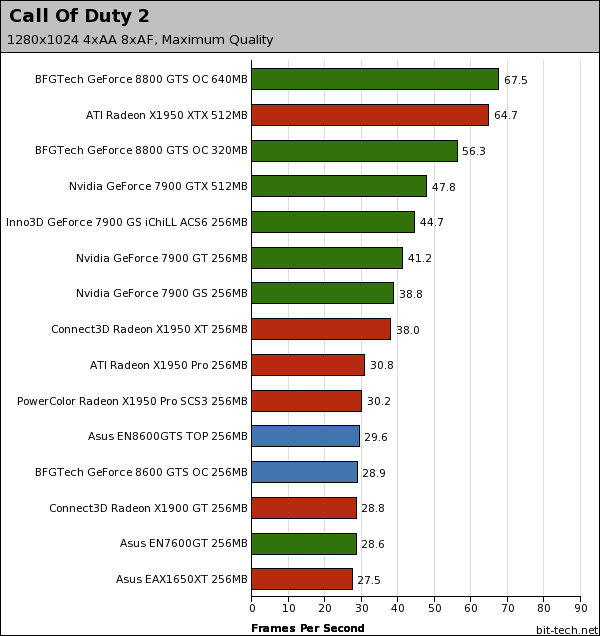
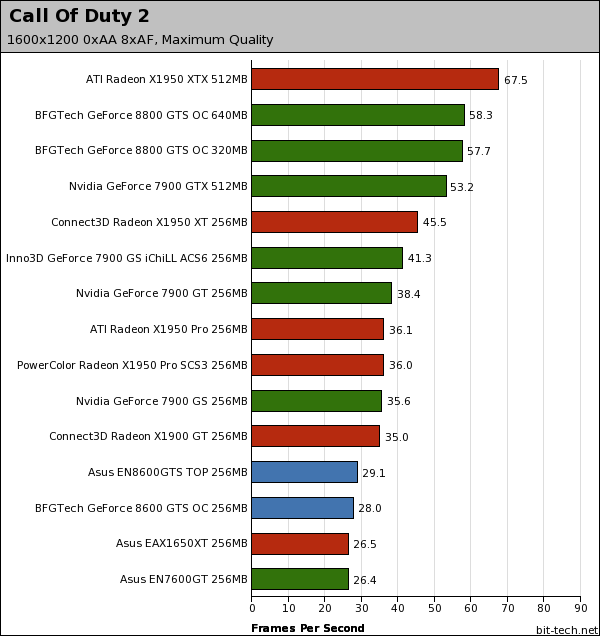
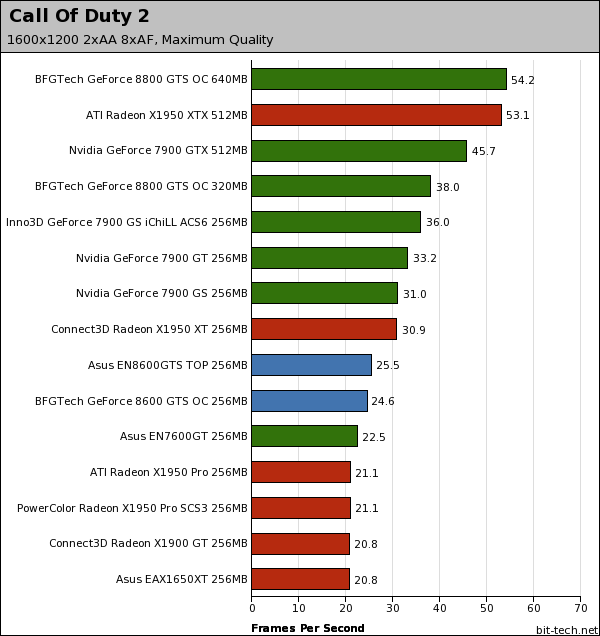
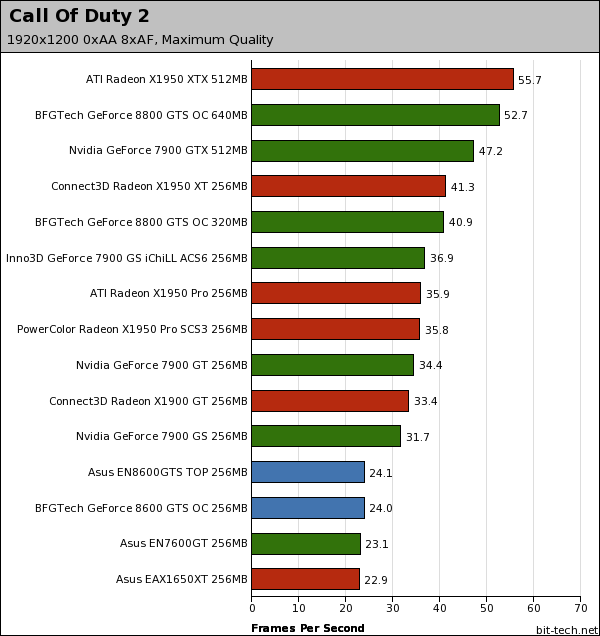
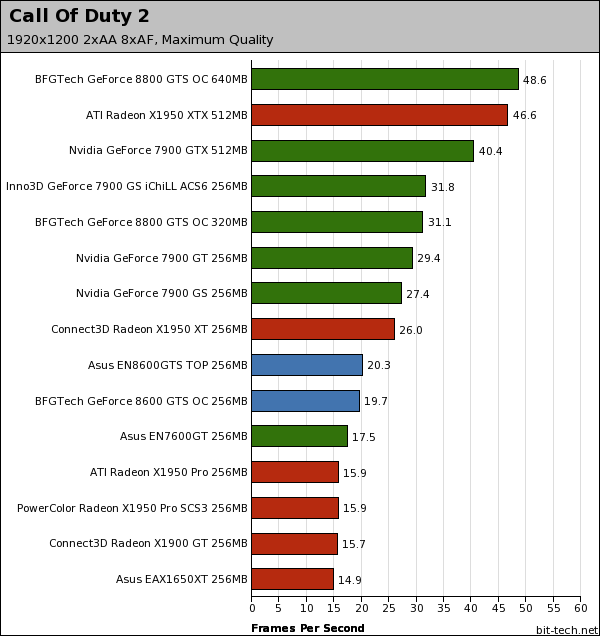
Admittedly, our test scenario is pretty heavy for a mid-range card, even at 1280x1024, but it really highlights a problem with GeForce 8600 GTS in memory bandwidth intensive situations. For reference purposes, you'll hit around 36 to 38 frames per second in our benchmark with 0xAA 8xAF at 1280x1024, proving that it's not just anti-aliasing that is hurting GeForce 8600 GTS's performance.
Above 1280x1024 2xAA, you're going to have to make image quality compromises in this title in order to achieve playable frame rates. Lowering the texture quality will help, but you're going to have to do more than that to get frame rates in the mid 30s. A starting point would be to lower "Soften Smoke Edges". If that doesn't give you enough performance, lower the lighting quality and the number of corpses.

MSI MPG Velox 100R Chassis Review
October 14 2021 | 15:04


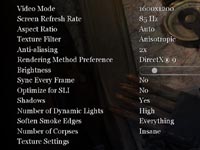









Want to comment? Please log in.